-
 +14 +1
+14 +1NASA mulls possible mission to Venus after recent discovery of possible life
NASA is considering approving by next April up to two planetary science missions from four proposals under review, including one to Venus that scientists involved in the project said could help determine whether or not that planet harbors life. An international research team on Monday described evidence of potential microbes residing in the harshly acidic Venusian clouds: traces of phosphine, a gas that on Earth is produced by bacteria inhabiting oxygen-free environments. It provided strong potential evidence of life beyond Earth.
-
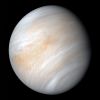 +6 +1
+6 +1Possible signs of life detected on Venus
Something amazing just happened a few minutes ago. Scientists have detected an unusually rare and toxic gas called phosphine in the clouds over venus. This is a gas that is usually generated by decomposing processes from biomatter. According to the researchers, there is no other explanation right now that could account for the sheer quantity of phosphine in Venus.
-
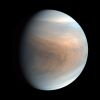 +31 +1
+31 +1Scientists find possible sign of life on Venus
Astronomers have found phosphine in the atmosphere of Venus, possibly indicating life.
-
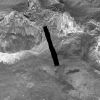 +12 +1
+12 +1Scientists discover volcanoes on Venus are still active
A new study identified 37 recently active volcanic structures on Venus. The study provides some of the best evidence yet that Venus is still a geologically active planet. A research paper on the work, which was conducted by researchers at the University of Maryland and the Institute of Geophysics at ETH Zurich, Switzerland, was published in the journal Nature Geoscience on July 20, 2020.
-
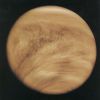 +20 +1
+20 +1Yes, There Really Could Be Life In The Cloud Tops Of Venus
Here's how the closest place to "hell" in our Solar System might actually be home to life.
-
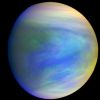 +14 +1
+14 +1The length of a day on Venus keeps changing
For over 50 years, humans have tried to pull back the thick clouds of Venus to study its surface. Most observations have tapped the long wavelengths of radar to pierce the cloud layers. Now, scientists have combined long-term radar observations of the planet’s surface to try to clarify a longstanding mystery behind the length of Venus' day.
-
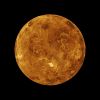 +10 +1
+10 +1NASA Wants to Send a Probe to the Hellish Surface of Venus
The longest a spacecraft has survived on Earth's "evil twin" is just 127 minutes. Now NASA is building one to last 60 days.
-
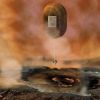 +4 +1
+4 +1Earthquake-detecting balloons could help reveal the inner structure o
Venus is a hellish environment. With a bone-dry, reddish-brown surface marred by thousands of volcanoes and covered in ancient lava flows, it’s not a place you want to spend your time. And sure, the planet has occasional rain showers, but they sprinkle sulfuric acid, not water, which likely taints the air with the smell of rotten eggs. At the surface, temperatures rise to over 850 degrees Fahrenheit (450 Celsius; hot enough to melt lead), and the pressure hovers around 90 times that of Earth.
-
 +21 +1
+21 +1NASA eyes ‘cloud city’ airship concept to explore Venus
NASA is considering a spectacular airship concept for Venus exploration. The space agency’s Systems Analysis and Concepts Directorate (SACD) has posted potential designs of the High Altitude Venus Operational Concept (HAVOC) on its website. The airships have even been compared to a “cloud city” by Space.com.
-
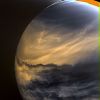 +17 +1
+17 +1Akatsuki's Amazing Views of Venus - Sky & Telescope
Its engine blew up seven years ago, and by all rights the Japanese spacecraft Akatsuki shouldn't have survived. However, engineers at the Japan Aerospace Exploration Agency (JAXA) refused to give up. The spacecraft not only survived its deep-space catastrophe, but it's now safely in orbit around Venus and producing breathtaking images of swirling clouds at multiple levels within the planet's dense atmosphere that have never been glimpsed before. Scientists from the European Space Agency's Venus Express spacecraft...
-
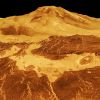 +15 +1
+15 +1Armed with tough computer chips, scientists are ready to return to the hell of Venus
In an underdog city, at an underdog NASA lab, researchers are thinking hard about an undeservedly neglected planet. Venus is Earth's cousin, closest in composition and size, but for decades it has remained veiled. NASA hasn't sent a mission there since 1989; more recent European and Japanese orbiters have made halting progress that stops largely at the planet's thick sulfur clouds. No craft has touched down since 1985, when the last of a series of advanced Soviet landers clad in armored pressure vessels endured a couple hours before succumbing to the deep-ocean pressure and furnacelike temperature of the planet's surface.
-
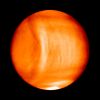 +20 +1
+20 +1Giant Mystery Wave Spotted in Atmosphere of Venus
Researchers have spotted a strange, stationary wave suspended in Venus’ atmosphere. By Elizabeth Howell.
-
 +37 +1
+37 +1Was Venus the first habitable planet in our solar system?
Its surface is hot enough to melt lead and its skies are darkened by toxic clouds of sulphuric acid. Venus is often referred to as Earth’s evil twin, but conditions on the planet were not always so hellish, according to research that suggests it may have been the first place in the solar system to have become habitable. The study, due to be presented this week at the at the American Astronomical Society Meeting in Pasadena, concludes that at a time when primitive bacteria were emerging on Earth, Venus may have had a balmy climate and vast oceans up to 2,000 metres (6,562 feet) deep.
-
 +38 +1
+38 +1Hellish Venus Might Have Been Habitable for Billions of Years
A team of astronomers think the torrid and toxic world was once a cozy home for potential life. By Shannon Hall.
-
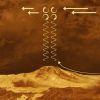 +10 +1
+10 +1What lies beneath: Venus’ surface revealed through the clouds
Using observations from ESA’s Venus Express satellite, scientists have shown for the first time how weather patterns seen in Venus’ thick cloud layers are directly linked to the topography of the surface below. Rather than acting as a barrier to our observations, Venus’ clouds may offer insight into what lies beneath.
-
 +28 +1
+28 +1Should We Colonize Venus Instead of Mars?
Mars One. The Mars Rover. Bruno Mars. Mars Bars. It's pretty clear we're OBSESSED with the idea of Mars, especially in regard to it being a potential colony for earthlings. But is that really the best option? Is there a better place for us to colonize in our solar system? Well, how about Venus? Sure the surface temperature is over 450 degrees Celsius, with crazy pressure, but there might be a smart way around that, making Venus a better option for long term colonization than Mars! How?
-
 +11 +1
+11 +1Should We Colonize Venus Instead of Mars?
Mars One. The Mars Rover. Bruno Mars. Mars Bars. It's pretty clear we're OBSESSED with the idea of Mars, especially in regard to it being a potential colony for earthlings. But is that really the best option? Is there a better place for us to colonize in our solar system? Well, how about Venus? Sure the surface temperature is over 450 degrees Celsius, with crazy pressure, but there might be a smart way around that, making Venus a better option for long term colonization than Mars! How?
Submit a link
Start a discussion




















